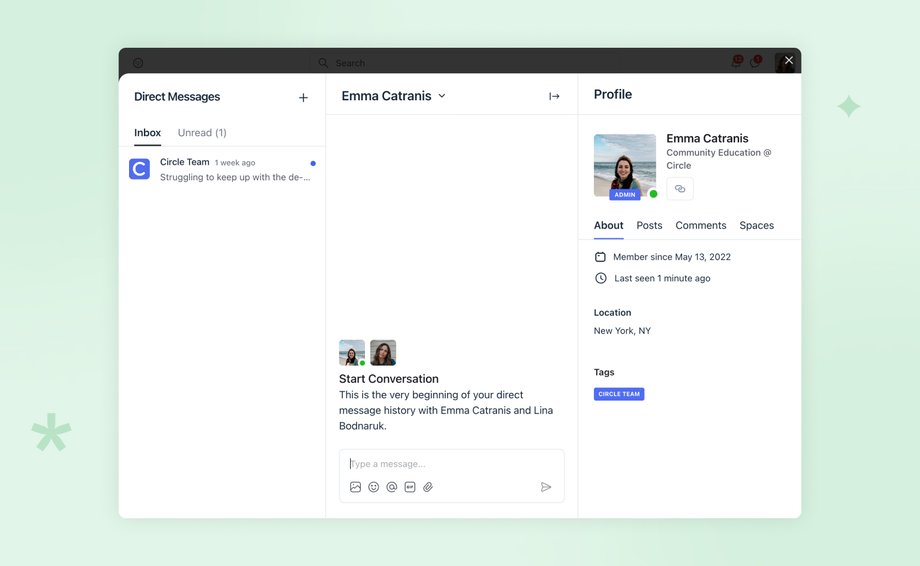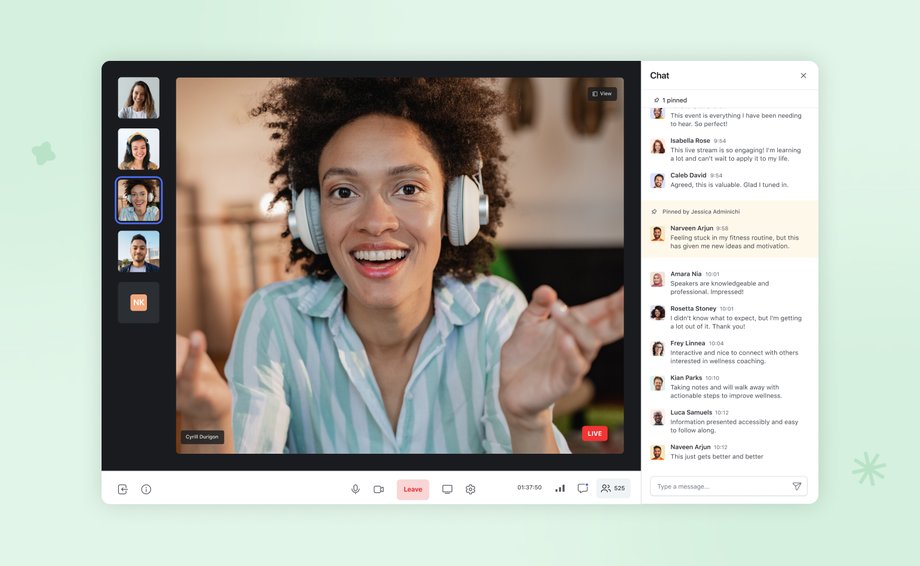Community builder’s guide: 3 strategies for fostering engagement online
Over the past decade, online communities have evolved into powerful tools—even lifelines—for connecting people and building personal and professional relationships.
As a community leader, you have an opportunity to spark and sustain meaningful engagement within your online community that can genuinely transform the lives of your members. Community engagement is a process and an outcome that involves encouraging members to participate and contribute to your community actively.
But fostering and maintaining community engagement requires consistent, intentional actions.
It can be easy to spark engagement; sustaining it over the long term can be tricky. Seeing engagement plateau or drop can deplete your morale. It’s important that you don’t give up! Most communities take several months to hit their stride and require specific nurturing actions you may not have previously considered.
So what do you need to plan your community engagement strategy? Here are three essential aspects to consider.
1. Stay consistent

The most critical aspect of building an engaged online community is consistency. Your members want to know what to expect inside your community. They are also much more likely to engage if you give them regular touchpoints, rituals, and other activities that establish a pattern or habit for participation.
Here are some specific ways you can build consistency in your community:
- Weekly passive rituals: These activities happen regularly without requiring much effort from members or you as the leader. For example, you could post a “Monday Work Out Loud” thread to ask what people are focusing on that week or a “Friday Funny” meme collection to help members start their weekends with a smile. In most platforms (Circle included!), you can pre-schedule these.
- A regular cadence of gatherings: Whether you’re hosting virtual meetups or in-person events, having a regular schedule of gatherings can help members plan their time and ensure they don’t miss out. It’s best to announce these at least a few weeks in advance or have the schedule for the quarter or year planned.
- A regular cadence of education or co-creation: Depending on the focus of your community, you can offer regular educational or co-creation sessions. For example, if you run a community for writers, you could host a weekly writing workshop or a monthly “book club” discussion.
- Newsletters: Newsletters can be a great way to keep members informed about upcoming events, important news, and other updates.
2. Keep thing interesting

Another crucial aspect of creating online community engagement is experimentation and keeping things interesting. Not everything should be ritualized or predictable. No one wants to participate in a community where everything is automated; it removes the serendipity that makes communities so powerful.
Members are more likely to stay engaged if they feel that the community is providing them with value and new, fun experiences—as long as these experiences also fuel their progress.
Here are some specific ways you can experiment and keep things interesting in your community:
- Specialized events and workshops: Hosting workshops or webinars on relevant topics can be an excellent way to provide value to your members and keep them engaged. Depending on your community’s focus, you could offer workshops on social media marketing, self-care, or financial planning. These topics may not be central to your community’s core purpose, but they could be important to your members holistically. Bring fun guest speakers from outside the community, and introduce your members to people not currently in their orbit.
- Ad hoc outreach: Surprise your members with unexpected outreach activities. You can do this with simple thank-you notes or DMs—they go a long way. You can also put a bit of budget behind the outreach and send tokens of appreciation (physical stickers or badges, coffee gift cards, or thank you cards). Encouragement is essential to ongoing engagement and will help your members feel seen for their contributions.
- Fundraising event or contest: Find an allied non-profit organization and partner with them to help them raise funds for a cause important to your community. Crafting a campaign around the partnership will create a powerful shared experience and story for members.
- Polls and surveys: Don’t make decisions in a vacuum! When considering trying something new, run it by your community first. Polls are one of the easiest ways for members to engage and are great at sparking further conversation.
Keeping things interesting is all about trying new things, so if you have a zany or off-the-wall idea, just try it! The worst that can happen is no one shows up. The best that can happen is you change people’s lives for the better.
3. Prepare to scale

As your community grows, it’s essential to prepare for scalability. You need to identify leaders within the community who can help you manage and engage members. Here are some steps to prepare for scalability:
- Identify leaders. Look for actively engaged members in the community who show natural leadership skills. They could be great candidates for leadership roles within the community.
- Find roles for leaders. Once you’ve identified leaders, give them specific roles within the community. These roles could include moderating forums, organizing events, or creating content. I’ve shared how I use Notion to delegate roles and tasks here on YouTube.
- Train and engage leaders. Provide your community leaders with the training and resources they need to succeed. Regular check-ins and feedback sessions can also keep leaders engaged and motivated. When I bring on volunteers, I always offer them free mentorship time with me. The mentorship time isn’t scalable (and I don’t want it to be), but it brings me great satisfaction and enables others to step up to lead alongside me.
Building an engaged online community requires a holistic, long-term approach. You can create an engaged and sustainable community by focusing on consistency, experimentation, and scalability. Engagement for engagement’s sake serves no one, so always keep the needs and interests of your members at the forefront of everything you do.
With dedication and effort, you can build a thriving community that provides value to its members and helps them connect and grow.
About the Author, Carrie Melissa Jones
I’m an entrepreneur, author, researcher, and advisor to community businesses who has helped hundreds of organizations build thriving communities—including Airbnb, Discord, Google, two U.S. presidential campaigns, and small businesses and non-profits worldwide. I am also the co-author of the award-winning book Building Brand Communities with Charles Vogl and hold an M.A. in communication with a concentration in virtual communities.
If you want to create engagement systematically, I invite you to check out my free workshop on designing meaningful community experiences. It will guide you through the strategy behind all your community activities without adding to your overwhelm.
As you experiment and learn, let’s stay in touch and share best practices! Follow me on Instagram at @carriemelissajones.
Want to improve engagement in your community?
Circle’s community platform brings together your members, discussions, events, courses, and content—all in one place, under your own brand. Plus, you get access to our customer community full of handy resources and over 8,000 community builders on the same journey as you.